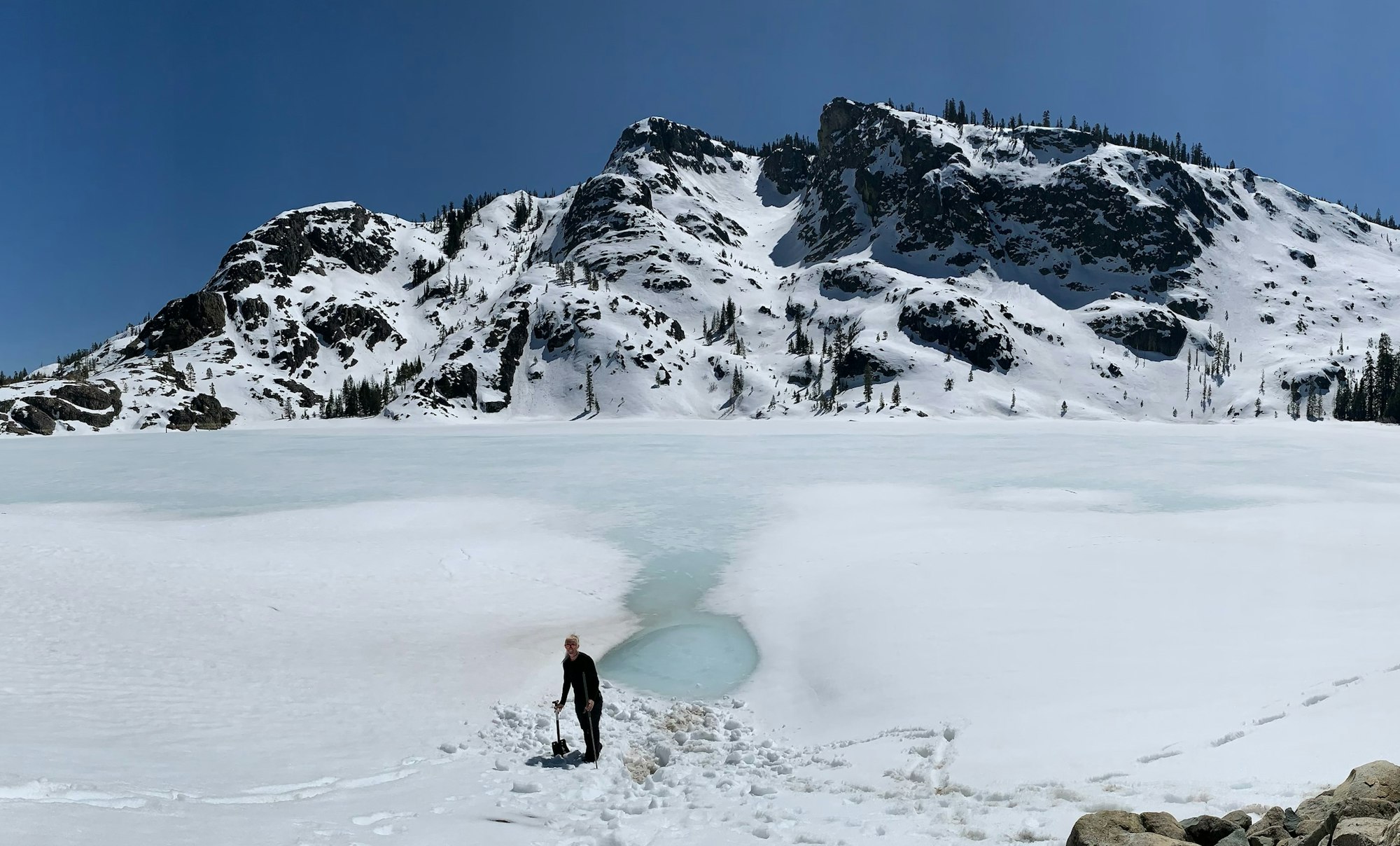NID snow survey: snowpack and water content below average

March produced only half of average high country precipitation, and Nevada Irrigation District (NID) is asking customers to conserve water going into the warmer, drier spring.
During the District’s snow survey taken March 30 and 31, surveyors found the snow water equivalent (SWE) in the Sierra snowpack was 24.2 inches, which is 72 percent of the normal average of 33.5 inches for this time of year. The survey was taken at the District’s five high-elevation snow courses.
“March produced half of the average precipitation for the month, adding two inches of water content to our snowpack,” said Thor Larsen, NID’s Water Resources Superintendent. “The dry weather at the end of March is projected to continue into April. These conditions will create higher than average demands heading into the irrigation season. With reservoir storage levels below average, the District is encouraging all customers to conserve water.”
Normally, the April 1 survey measures the snowpack when it is the deepest and has the highest snow-water content, which is a key component of the water supply forecast for later in the summer. California water officials on Thursday reported the statewide snowpack is just 59 percent of average and the SWE is 16.5 inches as the state continues to experience one of the driest years on record.

At Bowman Lake, NID saw 5.45 inches of precipitation during March, bringing the season total to 33.16 inches which is 56 percent of average.
Many experts say the conditions indicate a return of summer drought conditions and water-use restrictions for the first time since 2016.
“The District will utilize the current snow survey data to complete water availability assessments for the irrigation season. The resulting forecast will help make the determination on implementation of the District’s Drought Contingency Plan if deemed necessary,” Larsen said. A Drought Contingency Plan guides NID staff and customers to help minimize drought or water supply shortage impacts.
The snow survey showed NID’s highest course, Webber Peak (7,800 feet) had 65.3 inches of snow with a water content of 25.5 inches. The English Mountain snow course (7,100 ft.) had 79.4 inches of snow with a water content of 33.6 inches. Webber Lake (7,000 ft.) had 57.5 inches of snow with a water content of 22.7 inches. Findley Peak (6,500 ft.) had a snowpack of 54.8 inches and a 23.3-inch water content. Bowman Reservoir (5,650 ft.) had 32.6 inches of snow and a 16-inch water content.
At the lower division Chalk Bluff snow course (4,850 ft.) on the Deer Creek watershed, the March 30 survey found 2.7 inches of snow with a 1.1-inch water content (the Chalk Bluff numbers are not included in the total average).
NID’s nine major reservoirs are currently storing 182,606 acre-feet of water, which is 68 percent of capacity and 81 percent of average for this date (an acre-foot is one acre covered one foot deep).
A member of the California Cooperative Snow Survey, NID conducts official snow surveys each year. Results of the snow surveys are used to predict water availability locally and statewide.
The District was formed 100 years ago to deliver water for agricultural irrigation and drinking water to customers in Nevada, Placer, and Yuba counties. The District’s water originates as snowmelt found in 70,000 acres of high elevation watershed near the headwaters of the Yuba River, Bear River and Deer Creek. Water is stored in reservoirs and moved through one of six treatment plants to produce three billion gallons of drinking water each year for 25,000 home and businesses. Hundreds of miles of canals and pipes deliver water to 30,000 acres of irrigated land, as well as to homes, farms and businesses.
Visit nidwater.com to learn more.
